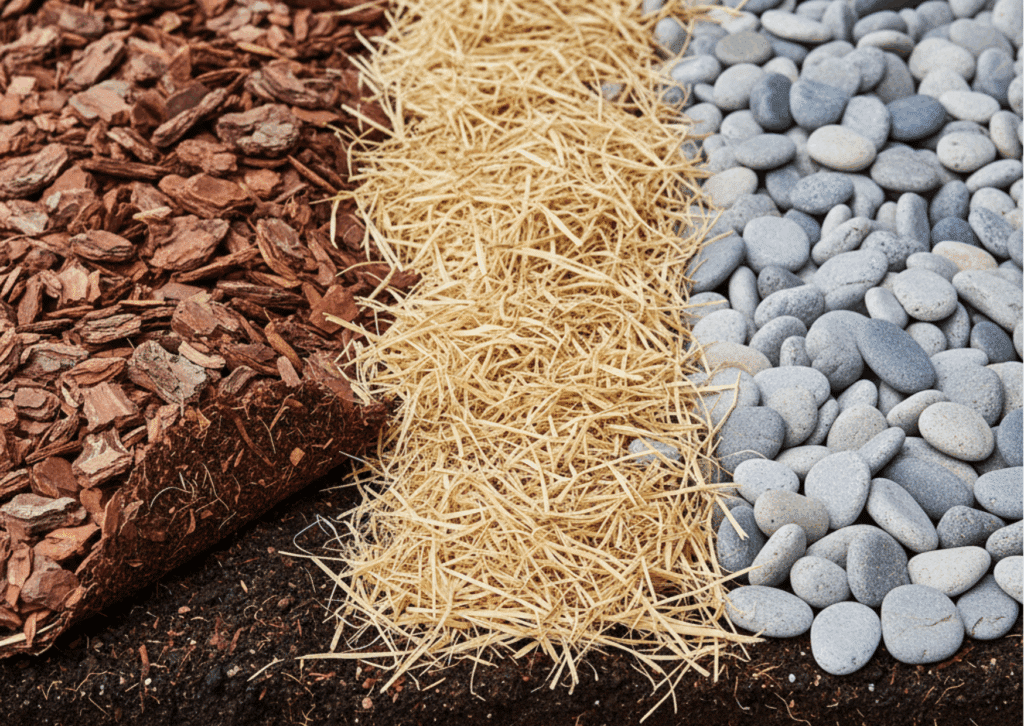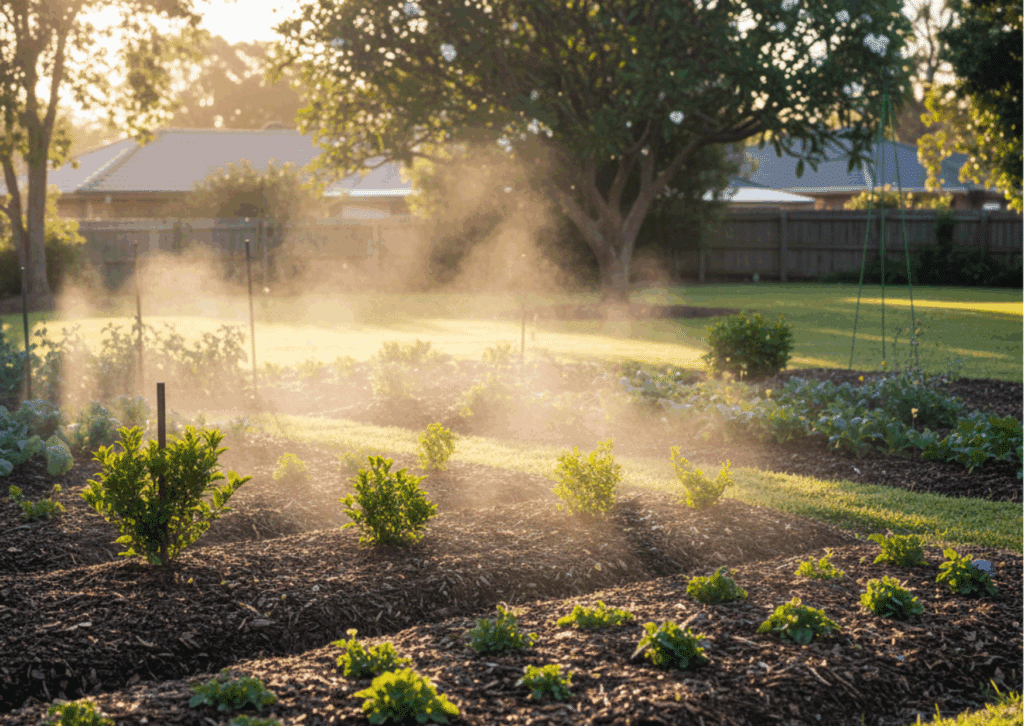As the cool months settle in, preparing your garden for winter becomes essential to protect your plants from frost, moisture loss, and soil erosion. One of the most effective and affordable ways to do this is by choosing the right mulch. The right mulch acts as a natural insulator, helping your garden survive and thrive through fluctuating temperatures. Whether you’re a weekend gardener or a seasoned landscaper, understanding which mulch to use and how to apply it properly can make a world of difference.
Why Winter Mulching Makes or Breaks Your Garden’s Health
Winter can be harsh on plants, especially when soil temperatures drop below what roots can tolerate. Mulching helps stabilize soil temperature, preventing roots from freezing during cold snaps. It also traps valuable moisture, reducing the need for constant watering even during dry, windy winter days.
Mulch works as a protective layer that minimizes the impact of sudden temperature changes. When the soil repeatedly freezes and thaws, roots can become damaged or even lift from the soil, disrupting plant growth. Mulch keeps conditions steady, creating a safe, warm environment for your garden. It also reduces soil compaction and improves aeration, helping roots breathe better.
In areas like Caboolture, where winters are mild but can still surprise with chilly nights, applying mulch before the coldest part of the season is an easy yet powerful way to maintain plant health and soil balance.
The Hidden Dangers of Choosing the Wrong Mulch
While mulching is beneficial, not all mulches are created equal. Using the wrong type can lead to problems such as poor drainage, mold growth, or pest infestations. For instance, some fine or compacted mulches can create a barrier that prevents water from reaching the roots. On the other hand, overly coarse mulches may not insulate the soil properly, leaving roots exposed to cold air.
Certain organic mulches can also decompose too quickly, stealing nitrogen from your soil as they break down. This can weaken your plants during a time when they need extra support. Similarly, cheap or low-quality mulches might harbor weed seeds or pests that thrive in damp winter conditions.
Landscape City often advises gardeners to inspect mulch carefully before purchasing. A high-quality, clean mulch not only looks better but performs better, protecting your plants without introducing unwanted problems.
Organic vs. Inorganic: Which Mulch Wins for Winter Protection?
The first choice every gardener faces is whether to go organic or inorganic. Organic mulches, such as bark, straw, leaf litter, and compost, are excellent for enriching the soil as they break down. They improve soil structure, boost microbial activity, and enhance long-term fertility. However, they may need occasional top-ups to maintain depth and performance.

Inorganic mulches, such as gravel, pebbles, and rubber, don’t decompose and are more durable. These are ideal for pathways, garden edges, or areas where you want a tidy, low-maintenance look. While they offer good insulation, they don’t add nutrients to the soil.
For winter, organic mulches often take the lead for plant beds and vegetable gardens because of their insulation and moisture retention qualities. However, mixing inorganic mulch with organic layers can provide both durability and protection. Landscape City offers a range of both organic and inorganic mulches, helping you match your garden’s needs perfectly.
The Ideal Mulch Depth: How Much Is Too Much (or Too Little)?
Getting the depth right is crucial. Too little mulch won’t provide enough insulation, while too much can suffocate the roots. The ideal thickness for winter mulching is typically between 5 to 8 centimeters.
For young or shallow-rooted plants, apply mulch closer to 5 cm to avoid waterlogging. Larger shrubs and trees can benefit from a deeper 8 cm layer. Always leave a small gap around the base of stems and trunks to prevent rot or fungal growth. This allows air to circulate and water to drain properly.
After heavy rain or strong winds, check your mulch regularly and redistribute it if necessary. Over time, organic mulches settle, so a quick top-up mid-season can help maintain protection.
Best Mulch Types for Caboolture’s Winter Climate
In Caboolture and surrounding areas, where winters are cool but not extreme, the goal is to preserve warmth and moisture while preventing weeds. Pine bark mulch is one of the top choices thanks to its slow decomposition rate and natural appearance. It’s excellent for garden beds and around ornamental plants.
Sugar cane mulch is another great option for vegetable gardens. It’s lightweight, easy to spread, and breaks down gradually to feed the soil. For those seeking a natural look, wood chips provide durability and strong temperature regulation.

If you prefer a more decorative option, pebble or gravel mulch can add texture and style to your landscape while improving drainage. At Landscape City, local gardeners often combine different mulch types for both function and visual appeal. A mix of organic and decorative mulch can create a balanced, attractive landscape that performs beautifully throughout winter.
Prepping Your Garden for Mulching Success
Before applying mulch, proper preparation ensures you get the full benefit. Start by clearing weeds, debris, and dead leaves from the soil surface. Loosen compacted soil with a garden fork to encourage better root oxygenation. Water the area thoroughly before mulching, as this locks in moisture that will stay protected beneath the layer.
For added insulation, you can place a thin layer of compost under the mulch to improve fertility. Once the mulch is laid, smooth it evenly without compressing it. Compressed mulch can block airflow and water penetration.
Timing also matters. It’s best to mulch after a few cool nights but before frost begins. This traps soil warmth and helps your plants adjust gradually to lower temperatures.
How to Keep Mulch Fresh and Effective All Season Long
Maintaining your mulch is just as important as applying it. Check periodically for signs of compaction, mold, or pest activity. Gently turn or fluff the mulch to improve airflow and prevent fungal buildup. If you notice areas thinning out, add a light top-up to maintain consistent coverage.
Avoid piling mulch directly against stems or tree trunks to prevent rotting. As the weather warms, you can reduce the mulch layer slightly to allow soil to dry out more quickly. This transition helps prevent root diseases in spring.
By caring for your mulch through the season, you extend its effectiveness and improve soil health. The result is a thriving garden ready to bounce back beautifully when spring arrives.
Choosing the right mulch doesn’t just protect your plants; it enhances the overall appearance and health of your garden. With a little planning and the right products, you can create a vibrant, resilient landscape all year long. Landscape City is proud to support local gardeners with quality mulches and expert advice, ensuring your garden gets the best protection through every season.


Leave a Comments